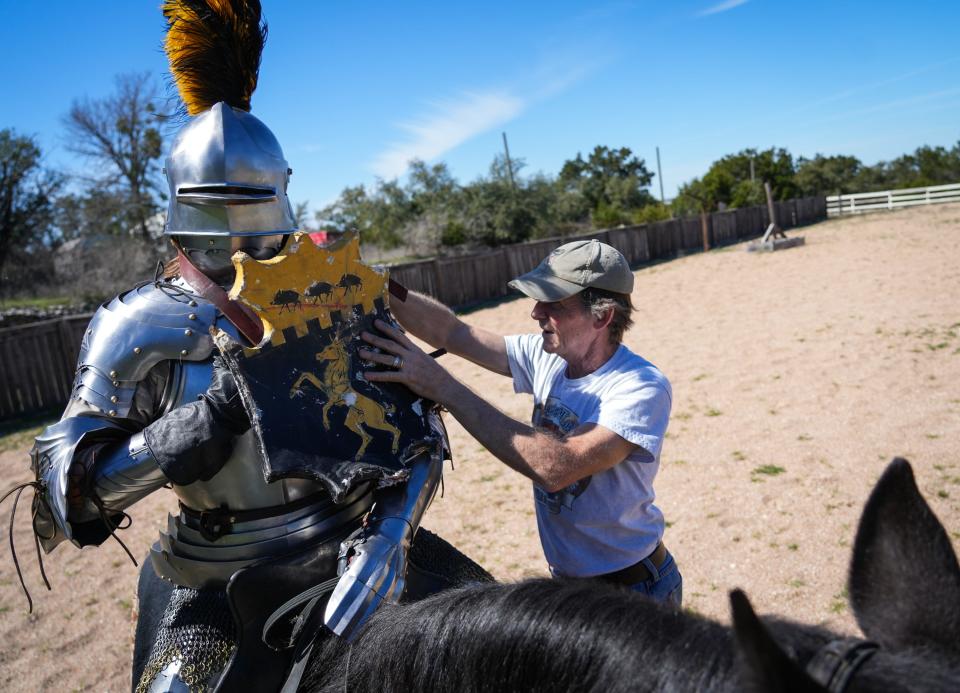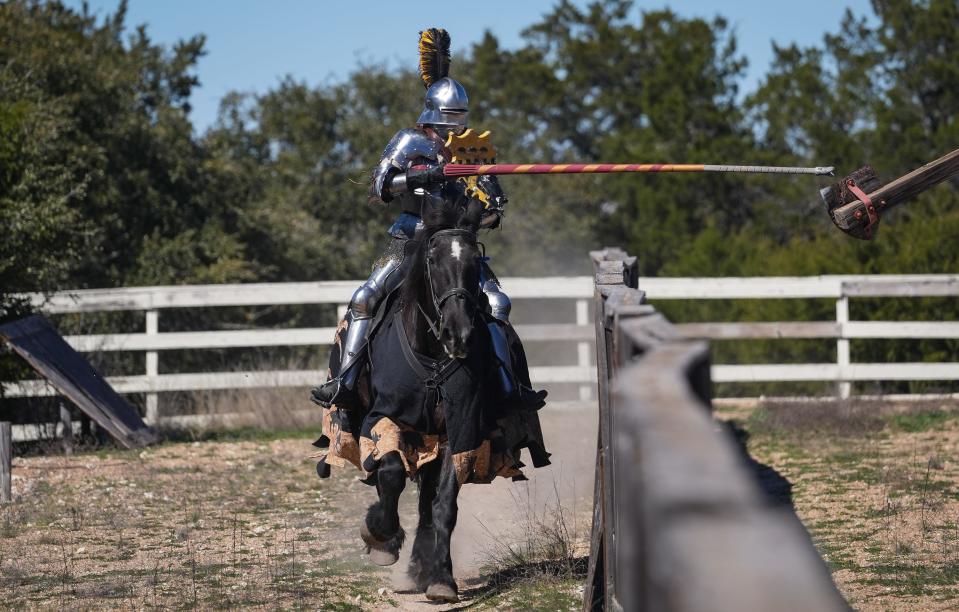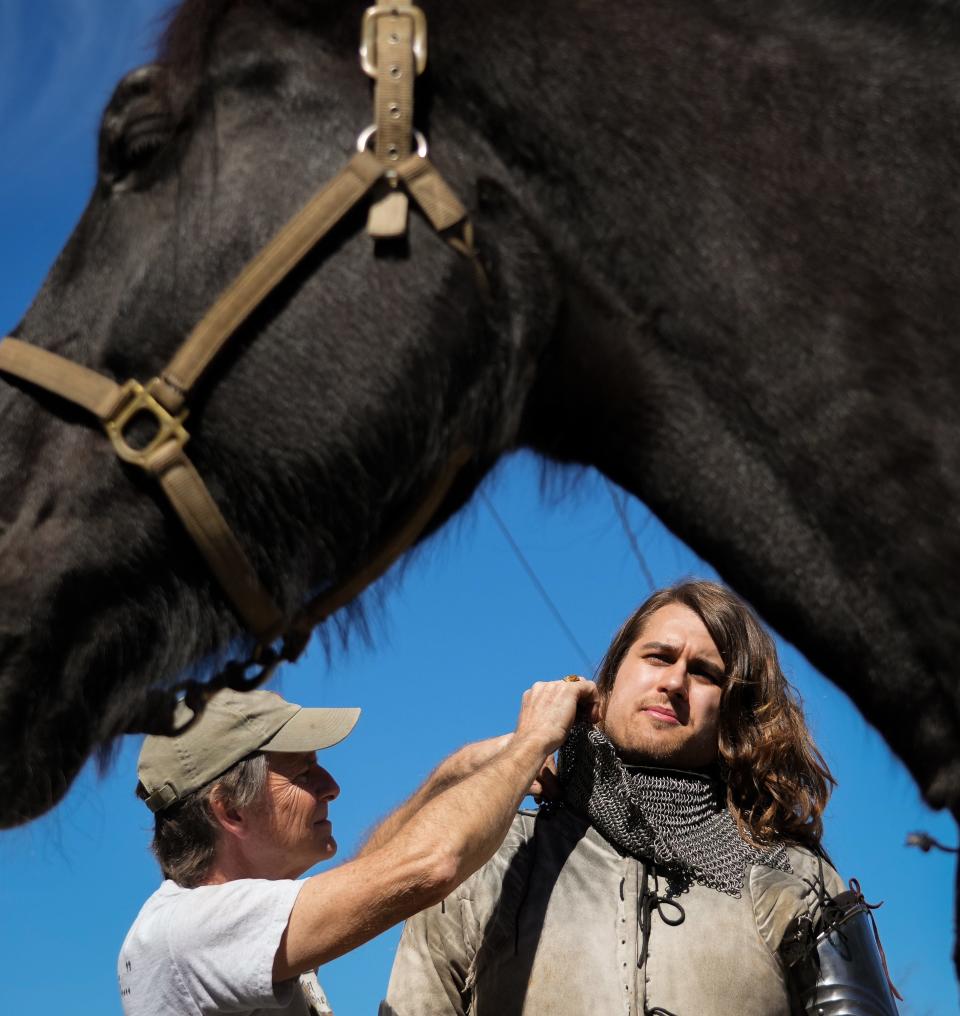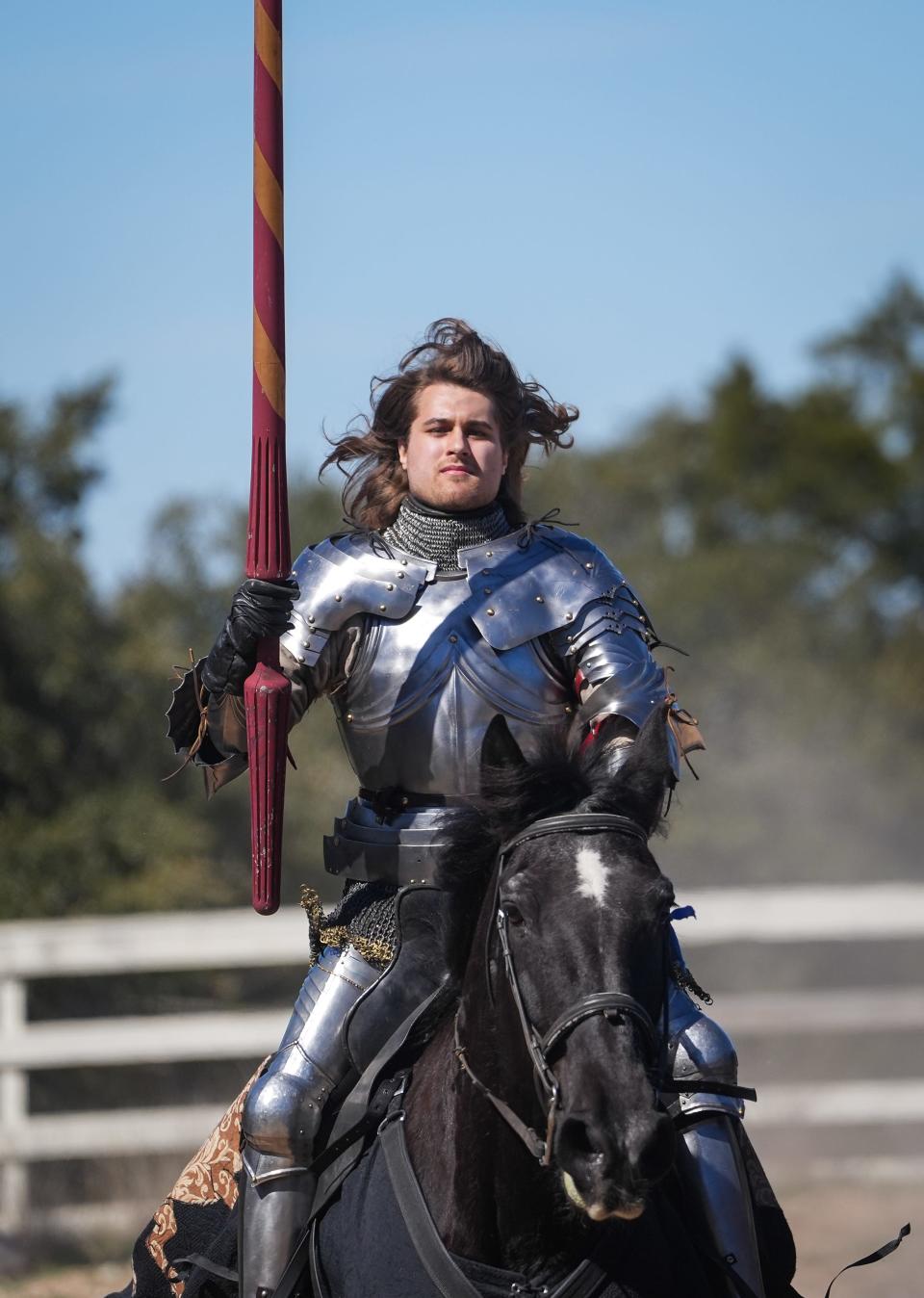'Like you are a knight'; Round Rock man dons armor, mounts a horse to joust competitively
Raven Eastwood used to compete in rodeos in high school. But now when he rides a horse, he puts on 70 pounds of armor and gallops with a lance toward an opponent in the medieval sport called jousting.
And he is competing among the best in the world.
"I would rank him certainly up close to the top as far as skill," said jousting coach Steve Hemphill, who has been training Eastwood for seven years. "He is enthusiastic, and he's talented, and he knows what he's doing. … He's definitely the cream of the crop."
Eastwood, who is 23 and works as a supervisor in a Round Rock coffee shop, said he got hooked on jousting at his first training session with Hemphill when he was 16.
"From the moment I was on a horse handling a lance, I was like, 'OK, this is what I want to do,'" said Eastwood.

He doesn't own his own horse but trains on one of Hemphill's, a 24-year-old named Tinkerbell. She is a cross between two breeds — a Friesian and a Percheron.
Hemphill's company, a'Plaisance Ltd., trains jousters at his property near Leander and also organizes tournaments nationally and around the world. The International Jousting League used to keep rankings on riders, but it hasn't done so since the pandemic, said Hemphill, who also jousts himself.
Eastwood put on his armor and galloped down a course on Tinkerbell, hitting a practice target with a lance at Hemphill's property. His next competition is this month in Lumberton, Miss., at a Renaissance event called Gulf Wars.
He said he loves the adrenaline rush that comes with competing and from the moment when the two riders try to hit each other's targets.
"For a moment, it feels like you are a knight," he said.

Jousting became popular among the nobility in Western Europe from the 11th through 17th centuries, said Hemphill.
"It did not start out as dueling," said Hemphill. "It started out (and continued) as training for war … but as a sport. In later centuries it was to display power and wealth. 'Jousting as dueling' is another myth perpetuated by Hollywood."
International competitive jousting is practiced like it was in the past, Hemphill said. It involves opponents in steel armor riding toward each other with lances made of wood. While separated by a narrow barrier called a tilt, they aim the 12-foot lances at a wooden shield that each rider wears on their left side of their chest. Points are scored if a rider breaks the tip of their lances on the other rider's shield.
Riders joust with each other about three times before moving on to other competitors.
Hemphill said people mistakenly think the point of jousting is to knock someone else off a horse, but that has never been the case.
"You are trying to hit a dinner-plate sized target that is passing you at 50 to 60 miles per hour," said Hemphill. He said there are about 20 competitive jousters in Texas. His students come from across the nation because he travels to give clinics in different areas, Hemphill said.
Eastwood said he was always interested in knights as a child and became attracted to jousting while studying medieval history in high school. He had a few injuries while riding bucking horses in rodeos, so he was ready to move on. Jousting also appealed to him in a spiritual way, Eastwood said.
"I'm a Christian," Eastwood said. "Knightly ideals were based on Christian values, like being compassionate and honorable. Jousting was based on chivalry and how you were expected to follow certain principles and behave in a certain way."
He wears armor he borrowed from Hemphill but is also buying his own, he said. It is a reproduction of late 15th century German armor consisting of steel plates from almost head to toe, he said. Lifting weights has helped him get the strength to wear the 70 pounds it weighs.

His armor includes a helmet that has one slot about three-eighths of an inch wide for his eyes that only allows him to stare straight ahead.
"I can't see the horse when I'm riding," he said, "so I have to rely purely on the feeling of it and the reins."
Most of what makes Eastwood a good jouster is his riding skill, Hemphill said.
"Ninety percent of jousting is being a good rider," he said. "Not only do you have to be in balance with your horse, you have to be in balance while carrying a 12-foot lance."
The lance weighs 4 pounds when you carry it upright, but when you lower it to strike your opponent's shield it can feel much heavier, said Hemphill.

Eastwood said he loves the way he and his horse work as a team: "What I like is the constant push to just be a better horseman and just in general being able to better communicate to the horse."
He said he doesn't talk to his horse when he competes but uses physical cues such as gently squeezing his legs. "I don't wear spurs ever," Eastwood said.
He has never had any major injuries when jousting and has never been knocked off his horse. The heavy armor that competitors wear when jousting helps keep them safe, said Hemphill.
"Jousting is safer than a high school football game when you are doing it correctly," he said, "and injuries are incredibly rare."
Eastwood said he has competed in about 20 jousting contests, including ones in Austin, Illinois and Mississippi. The most recent one he rode in was the European Jousting Championship last July at Spottrup Castle in Denmark. There were 16 competitors, and he placed right around the middle, he said. It was the first time he had been to a competition out of the country.
"It was really surreal to actually joust at a castle," Eastwood said. "I have to wonder if there were people there 500 years ago doing exactly the same thing."
He said that when he tells Texans about his jousting, he usually gets positive responses but a lot of questions.
"It's absolutely a weird sport," said Eastman. "It's not like Texas football or anything. … We are just out there competing, and sometimes we amp up the crowd."
This article originally appeared on Austin American-Statesman: Round Rock's Raven Eastwood dons armor to joust in competitively

